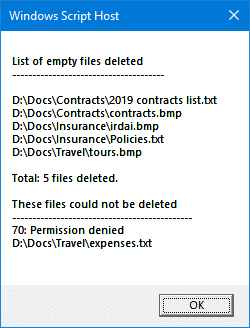
:max_bytes(150000):strip_icc()/001-how-to-customize-your-samsung-home-screen-881a376ddcec4be48eb0c07a92419e48.jpg)
- #How to check a zero byte file in unix update
- #How to check a zero byte file in unix code
- #How to check a zero byte file in unix download
#How to check a zero byte file in unix update
Have an update or suggestion for this article?

Sha1sum sha224sum sha256sum sha384sum sha512sum shasumįor each of these hashing algorithms the command options and behaviour is the same so when a hashing algorithm changes it is a drop-in replacement. Already there are many checksum commands distributed with Linux and it is expected this will evolve. As such it is expected that new algorithms will eventually emerge and be widely used. The sha1 hashing algorithm is also expected to be insecure.

The md5 hashing algorithm is now widely considered to be insecure. With all issues relating to security things move fast. Sha1sum: WARNING: 1 computed checksum did NOT match
#How to check a zero byte file in unix code
If the SHA-1 code fails to match a failure message will be printed to standard output and the file should not be trusted. If the SHA-1 code matches an OK will be printed to standard output along with the filename verified.
#How to check a zero byte file in unix download
If not file has been provided with the download the author of the file will normally publish a SHA-1 message digest and this can be checked manually by comparing the output of sha1sum with the published message digest. To check the SHA-1 of a file use the -c option and pass the SHA-1 checksum file that corresponds to the file or files you wish to check. If a SHA-1 file has been provided with a download this can be used to check the integrity of a downloaded file. It is worth verifying that the published SHA-1 also matches the one published by the author on any webpage relating to the download. Normally the canonical author of a file will also publish the SHA-1 of the file. This allows anyone downloading or receiving the file to verify (to some extent) that the file has not been tampered with. If the file somefile.txt is to be distributed on the Internet the accompanying SHA-1 file can be distributed with it. To write the SHA-1 of a file standard shell redirection can be used. The SHA-1 will be printed to standard output printing first the SHA-1 checksum then the name of the file. To get the SHA-1 of a file pass the path of a file to the sha1sum command. Although SHA-1 is no longer considered secure against well funded opponents it is still widely used to verify files. SHA-1 produces a 160-bit (20 byte) hash value known as a message digest. As such the sha1sum command can be used to attempt to verify the integrity of a file. This allows it be compared to a published message digest to check whether the file is unmodified from the original.

The sha1sum command computes the SHA-1 message digest of a file. Examples of reading a SHA-1 message digest, writing a SHA-1 message digest to a file, and checking a SHA-1 message digest.Įstimated reading time: 3 minutes Table of contents Last updated Saturday, Linux and Unix sha1sum command tutorial with examples Tutorial on using sha1sum, a UNIX and Linux command to compute and check a SHA-1 message digest. Linux and Unix sha1sum command tutorial with examples | George Ornbo


 0 kommentar(er)
0 kommentar(er)
